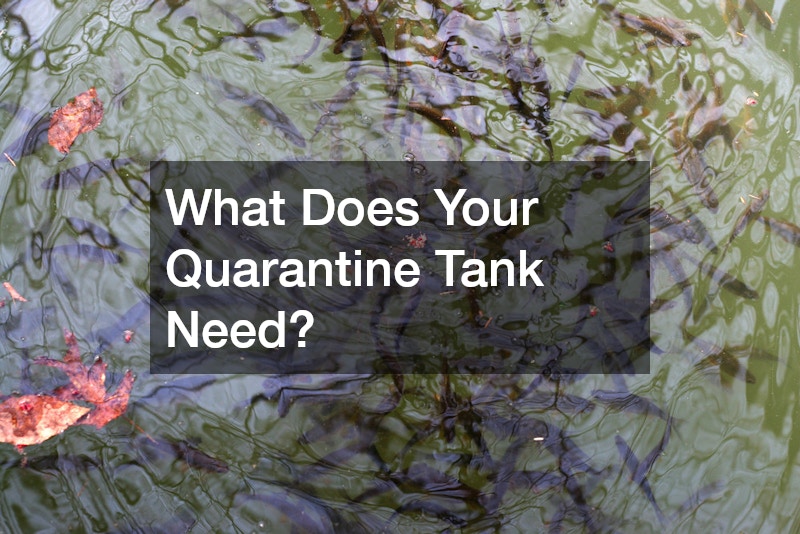
A quarantine tank is an essential part of responsible aquarium management, helping to prevent the spread of disease and stress among your fish. Whether you’re introducing new fish to your main tank or treating an existing fish for illness, a well-prepared quarantine tank can make a significant difference in the health and well-being of your aquatic pets. Here’s what you need to set up an effective quarantine tank.
Appropriate Tank Size
The size of your quarantine tank should be appropriate for the number and size of the fish you intend to house in it. While it doesn’t need to be as large as your main tank, it should be big enough to provide adequate swimming space and allow for comfortable, stress-free conditions. A 10 to 20-gallon tank is sufficient for most situations, but larger tanks may be necessary for bigger fish or multiple occupants.
Filtration System
A good filtration system is crucial in a quarantine tank to maintain water quality and remove toxins, particularly ammonia and nitrites, which can quickly accumulate in a small tank. Since the quarantine tank is likely to be sparsely decorated and have a higher bioload due to medication and fish waste, a hang-on-back (HOB) filter or sponge filter is ideal. Sponge filters are particularly beneficial because they provide both mechanical and biological filtration without creating too much water flow, which can stress sick or new fish.
Heater and Thermometer
Maintaining a stable water temperature is vital for the health of your fish, especially when they are stressed or ill. A reliable heater is essential to keep the water at the appropriate temperature, typically between 74°F and 80°F, depending on the species of fish. A thermometer should be placed in the tank to monitor the temperature regularly, ensuring it stays within the desired range.
Bare Bottom and Simple Decorations
A bare-bottom setup is often recommended for quarantine tanks because it’s easier to clean and monitor the fish. Without substrate, you can quickly spot uneaten food, waste, or signs of illness, such as parasites. Simple decorations, like PVC pipes or terracotta pots, can be added to provide hiding spots and reduce stress, but avoid using too many, as you want to keep the tank easy to clean.
Air Pump and Airstone
An air pump and airstone can help increase oxygen levels in the water, especially if the fish are under stress or if medications are reducing oxygen levels. The gentle bubbles from an airstone also contribute to water circulation, helping to distribute heat and prevent stagnation.
Water Conditioner
Water conditioners are necessary to remove chlorine and chloramines from tap water, making it safe for your fish. In a quarantine tank, where fish are already stressed or sick, it’s crucial to ensure the water is as clean and safe as possible. A water conditioner that detoxifies ammonia and nitrites can also be beneficial in a quarantine setup.
Medications and Test Kits
Having a supply of common medications, such as those for treating ich, bacterial infections, and parasites, is important when setting up a quarantine tank. Additionally, water testing kits are essential to monitor ammonia, nitrite, nitrate, and pH levels regularly. Keeping these parameters in check is vital for the recovery of sick fish and the acclimation of new fish.
Regular Maintenance Tools
A quarantine tank requires regular maintenance to keep water conditions optimal. Be prepared with basic tools like a siphon for water changes, a net for moving fish, and a bucket dedicated to the quarantine tank to avoid cross-contamination. Frequent water changes are necessary to remove waste and medication residues, helping to maintain a healthy environment.
Lighting
While lighting isn’t as critical in a quarantine tank as in a display tank, it’s still necessary to have some form of lighting to observe your fish’s condition. A simple, adjustable light can be used to simulate a day-night cycle, which can reduce stress for the fish. However, avoid overly bright lighting, as it can cause unnecessary stress, particularly for sick fish.
